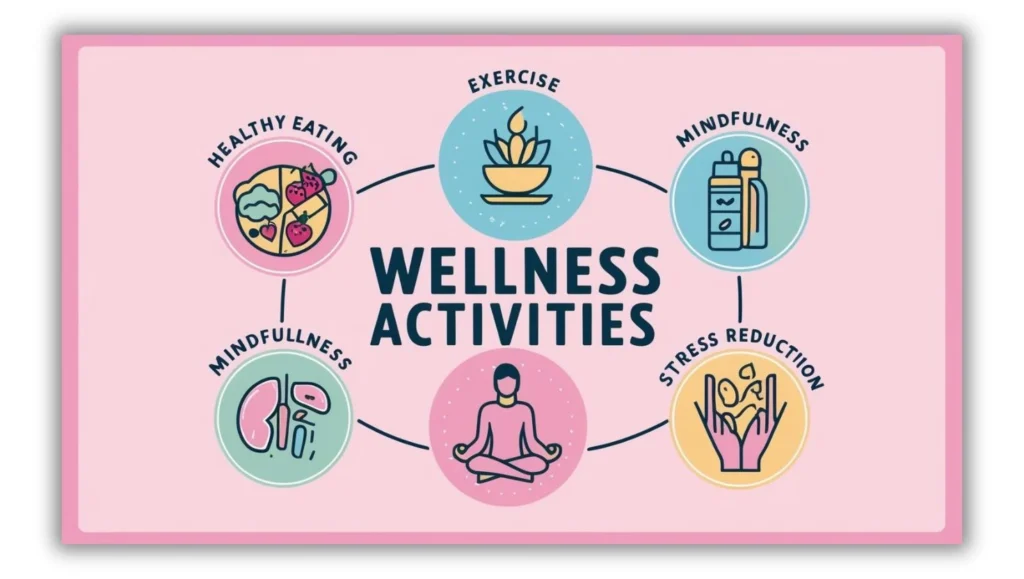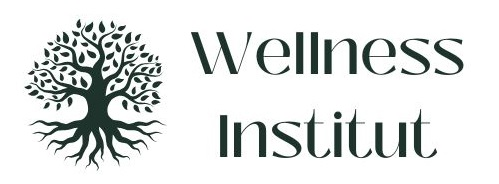What are the Main Benefits of Wellness?
Wellness Pillar Level: I
The main benefits of wellness are vast and impactful, affecting both physical and mental well-being. Here are some of the key benefits:
1. Improved Physical Health
Stronger Immune System: Regular wellness practices like exercise, proper nutrition, and stress management help boost your immune system, making you less susceptible to illnesses.
Better Sleep Quality: Adopting healthy habits, such as a balanced diet and regular physical activity, can improve sleep patterns, helping you feel more rested and rejuvenated.
Increased Energy and Vitality: A holistic wellness approach promotes better circulation, enhanced metabolism, and overall energy levels, making daily activities feel less tiring.
Weight Management: Regular physical activity, proper diet, and mindful habits contribute to healthier weight management, reducing the risk of obesity-related diseases.
2. Mental and Emotional Well-being
Reduced Stress and Anxiety: Wellness practices like meditation, yoga, and deep breathing exercises help lower cortisol levels, promoting relaxation and reducing stress.
Improved Mood and Happiness: Engaging in wellness activities often results in the release of endorphins, the body’s natural “feel-good” hormones, leading to a more positive outlook and enhanced mood.
Better Mental Clarity: Practices such as mindfulness and stress management techniques improve focus, concentration, and decision-making, leading to clearer thinking.
Enhanced Emotional Resilience: Regular wellness routines help build emotional strength, allowing individuals to better cope with life’s challenges and uncertainties.
3. Nurtured Soul and Spiritual Well-being
Inner Peace and Fulfillment: Wellness practices that focus on mindfulness, meditation, and self-reflection can foster a deep sense of inner peace. These practices help you connect with your inner self, creating a sense of spiritual fulfillment and contentment.
Alignment with Purpose: Engaging in wellness activities often encourages individuals to reflect on their values and life purpose, promoting a stronger sense of meaning and direction in life.
Emotional Healing: Wellness practices like journaling, meditation, and connecting with nature can help heal emotional wounds, allowing the soul to find balance and peace.
Greater Sense of Connection: Focusing on the soul can also foster a deeper connection to others, nature, and the universe, bringing a sense of unity and interconnectedness.

What are the Additional Benefits of Wellness Pillar Level 1?
1. Holistic Sense of Well-being
Balanced Mind, Body, and Spirit: Wellness emphasizes the connection between the body, mind, and spirit. By taking a holistic approach, individuals achieve a more balanced and harmonious life, with increased overall satisfaction and happiness.
2. Boosted Productivity and Focus
Increased Motivation: A healthy body and mind naturally lead to higher motivation levels, helping you stay focused and productive in both personal and professional aspects of life.
Better Work-Life Balance: Wellness practices help you manage stress, stay organized, and prioritize, ultimately leading to a healthier work-life balance.
3. Improved Relationships and Social Connections
Better Social Interaction: Wellness practices like group fitness classes, yoga, and mindfulness can create opportunities for social bonding, helping build meaningful relationships and a sense of community.
Increased Empathy and Compassion: Engaging in self-care practices and mindfulness can enhance your emotional intelligence, allowing for more compassionate and understanding relationships with others.
4. Enhanced Longevity
Longer Life Expectancy: A lifestyle focused on wellness, including regular physical activity, proper nutrition, and mental health care, has been linked to increased life expectancy.
Age Gracefully: Proper self-care, including skincare, nutrition, and regular exercise, can help you maintain a youthful appearance and preserve your vitality as you age.
5. Prevention of Chronic Diseases
Reduced Risk of Heart Disease: A wellness-focused lifestyle that includes regular exercise, a heart-healthy diet, and stress management can help lower the risk of cardiovascular conditions like hypertension, heart attack, and stroke.
Improved Digestive Health: A balanced diet, hydration, and stress management techniques support healthy digestion, reducing issues like bloating, constipation, and gastrointestinal discomfort.
Lowered Risk of Diabetes: Wellness practices, especially physical activity and balanced nutrition, can help manage blood sugar levels and prevent or manage Type 2 diabetes.
6. Self-Awareness and Personal Growth
Enhanced Self-Esteem: Engaging in wellness routines allows individuals to take care of themselves, boosting self-confidence and promoting a positive self-image.
Personal Growth: As people focus on improving their wellness, they often experience personal growth, learning more about themselves and developing healthy habits that contribute to long-term happiness and fulfillment.

Wellness Pillar 2 Level: PARTNERSHIP
Stronger Relationship Bonds: Engaging in wellness practices as a couple, like exercise or meditation, fosters deeper emotional connections and helps partners grow together, creating a supportive environment for mutual growth.
Improved Communication: Wellness practices often emphasize mindfulness, which can lead to better communication and understanding between partners. This strengthens the ability to resolve conflicts and promotes healthier relationships.
Increased Emotional Support: A wellness-oriented partnership encourages mutual emotional support, which helps partners navigate life’s challenges together and cultivate a sense of emotional security and resilience.
Wellness Pillar 3 Level: FAMILY
Healthy Family Dynamics: When wellness is embraced as a family, it cultivates healthy habits and fosters unity. Family activities like hiking, cooking healthy meals together, or practicing gratitude can strengthen family bonds and encourage healthier lifestyles.
Emotional Stability for Children: Wellness practices create a nurturing environment where children can feel emotionally safe, leading to better emotional regulation, resilience, and mental health as they grow.
Enhanced Connection Across Generations: Wellness routines can promote intergenerational connections, encouraging the sharing of wisdom and traditions. It provides an opportunity for families to build a sense of legacy and cohesion
Wellness Pillar 4 Level: COMMUNITY
Sense of Belonging: A focus on wellness at the community level strengthens social connections and creates a sense of belonging, whether it’s through group fitness, volunteer work, or shared environmental efforts.
Supportive Networks: Wellness-oriented communities provide a network of support where individuals can turn to for advice, encouragement, or help. This creates a sense of collective responsibility and strengthens the social fabric.
Increased Well-being through Collective Activities: Engaging in community wellness activities such as clean-up drives, wellness workshops, or group fitness classes can promote collective health and create a positive impact on the well-being of all members.
Wellness Pillar 5 Level: ANIMALS
Emotional Support: Interacting with animals has been shown to reduce stress and anxiety, improve mood, and provide emotional comfort. Pet owners, in particular, experience better mental health due to their connection with animals.
Improved Physical Health: Walking a dog, for example, increases physical activity, which contributes to better cardiovascular health and overall fitness.
Fostering Compassion and Empathy: Caring for animals nurtures compassion and empathy, creating deeper connections to the natural world and other beings.
Wellness Pillar 6 Level: MOTHER NATURE
Stress Reduction: Spending time in nature has proven to reduce stress, lower blood pressure, and enhance overall mental clarity. Natural environments have a calming effect that helps people reconnect with themselves.
Physical Health Benefits: Nature walks, hikes, and outdoor activities promote physical fitness, enhancing circulation, metabolism, and overall energy.
Rejuvenation of the Soul: Nature provides a space for introspection and emotional healing, allowing individuals to release negative emotions and restore balance within themselves.
Wellness Pillar 7 Level: The Collective Consciousness
Shared Wisdom and Growth: Collective consciousness fosters a sense of shared wisdom, which promotes global unity and collective well-being. It allows individuals to learn from others and grow in a holistic way.
Spiritual Growth: Being aware of and connected to the collective consciousness encourages individuals to consider larger, more universal spiritual principles, expanding their understanding and empathy.
Enhanced Creativity and Problem-Solving: When people work together with a shared sense of awareness, it creates a space for collective creativity and innovative solutions to common challenges.
Wellness Pillar 8 Level: Energy
Balanced Energy Flow: Maintaining balanced energy through practices like yoga, meditation, and energy healing helps individuals feel grounded, centered, and at peace.
Restoration of Vitality: Regular attention to personal energy levels through holistic wellness practices helps to restore and rejuvenate the body’s natural vitality and vitality, making one feel more energetic and alert.
Emotional Healing: Energy practices can facilitate the release of emotional blockages, allowing for emotional healing, balance, and better emotional regulation.
What does wellness mean, and why is it important?
Wellness is a holistic approach to health and well-being that goes beyond just the absence of illness. It focuses on the overall balance and harmony of a person’s physical, mental, emotional, and social health. Wellness involves making choices that enhance quality of life, and it’s about living in a way that supports optimal health and personal growth. READ MORE
What are the 8 pillars of wellness and how do they support a balanced life?
The 8 pillars of wellness are not just aspects of life—they are dynamic stages where each individual interacts and in that interaction, gains different experiences, which assist in the individual`s personal growth, transformation, and deeper understanding – higher awareness. Each pillar represents a unique dynamic stage with different purposes and goals. Throughout the life, individual connects to all the 8 wellness pillars. In some stages of life more to ones, than to the others, because what is “very important” now to an individual, later on may change into something else. READ MORE
What does living a wellness way of life look like?
A wellness way of life is about embracing a balanced approach to health, nurturing both the body and mind (1st Wellness Pillar). It goes beyond just physical fitness; it includes emotional, mental, and spiritual well-being. READ MORE
What are the 3 minds and how do they influence my well-being?
Human behavior is guided by three fundamental aspects of our brain: the Reptilian Mind, the Emotional Mind, and the Logical Mind. Each of these minds develops at different stages of life and plays a crucial role in how we perceive and interact with the world. READ MORE
What are the first steps in starting a wellness journey?
Begin by evaluating your physical, mental, emotional, and social health. This includes reflecting on your habits, routines, stress levels, and how you feel overall. Identify areas where you’d like to improve. READ MORE
What is the Wellness Circle Club Community?
If you’re looking for a welcoming, supportive space to begin or continue your wellness journey, consider joining the Wellness Circle Club. This 5-level wellness program is completely free and designed to guide you through a structured yet flexible path to greater well-being. As you progress, you’ll receive a title at each level that represents your growth and accomplishments, starting from Wellness Explorer and advancing to Wellness Luminary. READ MORE
How have others transformed their lives through wellness practices?
Our stories share real-life experiences of people who have undergone significant changes in their physical, mental, emotional, and spiritual well-being by embracing various wellness approaches. Whether it’s through mindfulness, physical movement, nutrition, counseling, or holistic therapies, these stories offer insight into how people have faced and overcome challenges, improved their health, and transformed their lives. READ MORE
How can wellness improve my mental, emotional, and physical health?
The Main Benefits:
The main benefits of wellness include improved physical health, such as stronger immunity, better sleep, and increased energy, all of which contribute to a more vibrant and active lifestyle.
Wellness practices also enhance mental and emotional well-being by reducing stress, improving mood, boosting mental clarity, and fostering emotional resilience in the face of life’s challenges.
On a deeper level, wellness nurtures the soul by promoting inner peace, alignment with life’s purpose, emotional healing, and a stronger sense of connection to both oneself and the world around us. READ MORE
What wellness practices are important for different age groups?
Wellness is a lifelong journey, and the approach to it evolves with every stage of life. Each stage brings unique challenges, opportunities, and needs, and understanding how wellness practices can be adapted to these stages is key to maintaining overall well-being. Below, we’ll explore how wellness can be tailored to children, young adults, parents, and seniors, and how focusing on wellness at each stage can yield specific benefits. READ MORE
Where can I download the free ebook on how to start a wellness journey?
There is a couple of free eBooks and eWorkbooks available for Free Download. CLICK HERE
